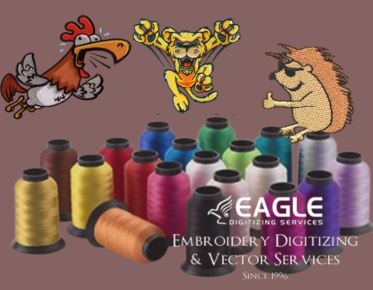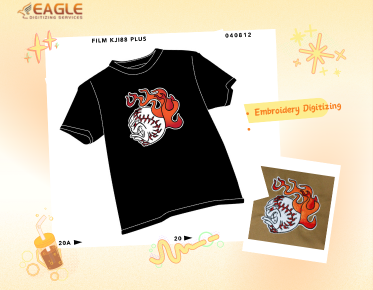Understanding Multi-Head Embroidery Machines: File Paths and Color Separations
Multi-head embroidery machines are a marvel of modern textile technology, allowing for the simultaneous stitching of multiple pieces of fabric with precision and speed. These machines are essential for businesses that require high-volume embroidery production, such as promotional product suppliers and corporate gift manufacturers. But how do these machines interpret file paths and manage color separations to produce intricate designs?
The Role of File Paths in Embroidery Machines
File paths in embroidery machines are crucial as they dictate the sequence and positioning of stitches. When a design is digitized, it is converted into a format that the embroidery machine can read. This format includes a file path that guides the machine's needles across the fabric. The file path ensures that each stitch is placed accurately, following the design's contours and details.
Embroidery digitizing services, such as those offered by Eagle Digitizing, specialize in converting artwork into these machine-readable files. They ensure that the file paths are optimized for the specific machine being used, minimizing thread breakage and ensuring smooth operation. This is particularly important for multi-head machines, where synchronization across all heads is necessary to maintain design consistency.
Understanding Color Separations
Color separations are another critical aspect of embroidery digitizing. They involve dividing a design into different color components, which the machine then stitches in sequence. This process is essential for designs with multiple colors, as it ensures that each color is applied in the correct order and position.
For instance, a logo with multiple colors will require precise color separations to ensure that each section of the logo is embroidered with the correct thread color. This process is facilitated by digitizing software, which allows for the creation of detailed color maps that the embroidery machine follows. Companies like Eagle Digitizing provide high-quality digitizing services that include meticulous color separations, ensuring that the final embroidered product matches the original design.
Challenges and Solutions in Multi-Head Embroidery
One of the challenges in multi-head embroidery is ensuring that all heads operate in unison. Any discrepancy in file paths or color separations can lead to inconsistencies in the final product. This is why it is crucial to work with experienced digitizing services that understand the intricacies of multi-head machines.
For businesses looking to streamline their embroidery processes, investing in reliable digitizing services is key. These services not only provide accurate file paths and color separations but also offer support and revisions to ensure complete satisfaction. Eagle Digitizing, for example, offers free revisions and format conversions, making it a valuable partner for businesses in the embroidery industry.
Future Trends in Embroidery Digitizing
As technology continues to evolve, the future of embroidery digitizing looks promising. Advances in software and machine capabilities are expected to further enhance the precision and efficiency of embroidery production. For businesses, staying updated with these trends and investing in cutting-edge digitizing services will be crucial to maintaining a competitive edge.
Moreover, the integration of artificial intelligence and machine learning into digitizing software could revolutionize the way designs are processed and executed. These technologies have the potential to automate complex tasks, reduce errors, and improve the overall quality of embroidered products.
In conclusion, understanding the role of file paths and color separations in multi-head embroidery machines is essential for businesses looking to optimize their production processes. By partnering with experienced digitizing services, companies can ensure that their designs are executed with precision and consistency, ultimately enhancing their product offerings and brand image.
As the embroidery industry continues to grow, staying informed about the latest trends and technologies will be key to success. Whether you're a small business or a large corporation, investing in quality digitizing services can make all the difference in achieving your embroidery goals.



